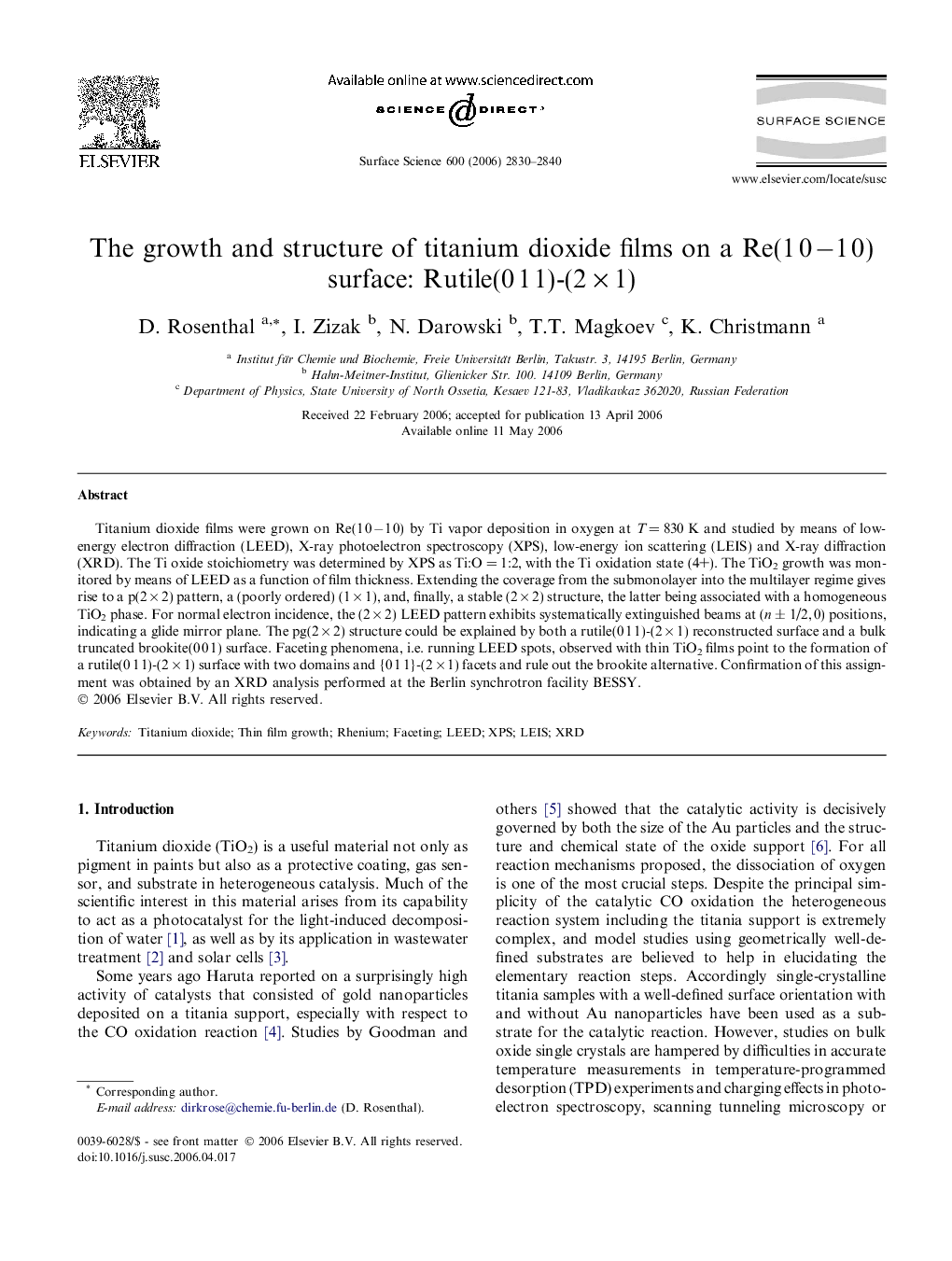| کد مقاله | کد نشریه | سال انتشار | مقاله انگلیسی | نسخه تمام متن |
|---|---|---|---|---|
| 5426685 | 1395897 | 2006 | 11 صفحه PDF | دانلود رایگان |

Titanium dioxide films were grown on Re(1 0 â1 0) by Ti vapor deposition in oxygen at T = 830 K and studied by means of low-energy electron diffraction (LEED), X-ray photoelectron spectroscopy (XPS), low-energy ion scattering (LEIS) and X-ray diffraction (XRD). The Ti oxide stoichiometry was determined by XPS as Ti:O = 1:2, with the Ti oxidation state (4+). The TiO2 growth was monitored by means of LEED as a function of film thickness. Extending the coverage from the submonolayer into the multilayer regime gives rise to a p(2 Ã 2) pattern, a (poorly ordered) (1 Ã 1), and, finally, a stable (2 Ã 2) structure, the latter being associated with a homogeneous TiO2 phase. For normal electron incidence, the (2 Ã 2) LEED pattern exhibits systematically extinguished beams at (n ± 1/2, 0) positions, indicating a glide mirror plane. The pg(2 Ã 2) structure could be explained by both a rutile(0 1 1)-(2 Ã 1) reconstructed surface and a bulk truncated brookite(0 0 1) surface. Faceting phenomena, i.e. running LEED spots, observed with thin TiO2 films point to the formation of a rutile(0 1 1)-(2 Ã 1) surface with two domains and {0 1 1}-(2 Ã 1) facets and rule out the brookite alternative. Confirmation of this assignment was obtained by an XRD analysis performed at the Berlin synchrotron facility BESSY.
Journal: Surface Science - Volume 600, Issue 14, 15 July 2006, Pages 2830-2840